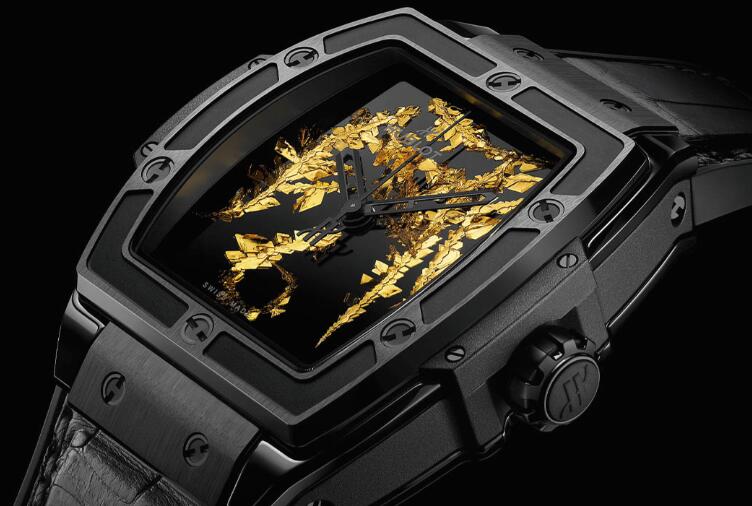
Hublot Spirit of Big Bang Gold Crystal

While the traditional Big Bang model continues to make a presence as Hublot’s iconic example, the Swiss watchmaker incorporated a bold square case shape with the Spirit of Big Bang Collection. Acting as a blank canvas for the designers at Hublot, the Spirit of Big Bang is seen in various renditions and special editions that are displayed as works of art for the wrist. Hublot is proud to announce the newest addition to the collection, the all-new Hublot Spirit of Big Bang Gold Crystal. The Spirit of Big Bang Gold Crystal features a 42mm satin-finished and polished black ceramic case, which draws the intended attention to the elegant dial. The dial of the Spirit of Big Bang takes on a simplistic design using the unique 24K Gold Crystal to gain eye appeal from collectors and enthusiasts. Alongside its state-of-the-art styling, Hublot powers its new example with the in-house HUB1710 Self-winding Movement, capable of holding an impressive 50-hour power reserve. Tying into the formal appearance, the Hublot Spirit of Big Bang Gold Crystal includes a black alligator leather strap with a black-plated stainless-steel deployment buckle clasp. The all-new Hublot Spirit of Big Bang Gold Crystal is now available for $29,500 by clicking the link below.
Hublot has dropped a pair of limited editions to celebrate recreating gold crystal in its labs, a breakthrough it claims is nothing short of alchemy.
The Nyon-based watchmaker has successfully transmuted gold into gold crystal, the rarest form of raw gold found in nature, with each crystal produced being unique in form.
Gold crystal is the original state of gold, deposited in rock seams under immense pressure before erosion exposes the gold and exposure to the elements turns it into nuggets and flakes. Occasionally, gold crystal is found preserved and commands a price among collectors well above the spot price for gold.
Hublot’s technique for recreating gold crystal sees it heat pure 24k gold to its melting point of 1064.18 degrees Celsius before before the temperature is reduced to allow crystals to form. The process currently has a high rejection rate, with only 20% of crystals being suitable for use.
The crystals are then applied to a black dial before being set in place under 20 layers of transparent lacquer, which is then polished to ensure it becomes virtually invisible and pulls focus onto the gold crystal instead.